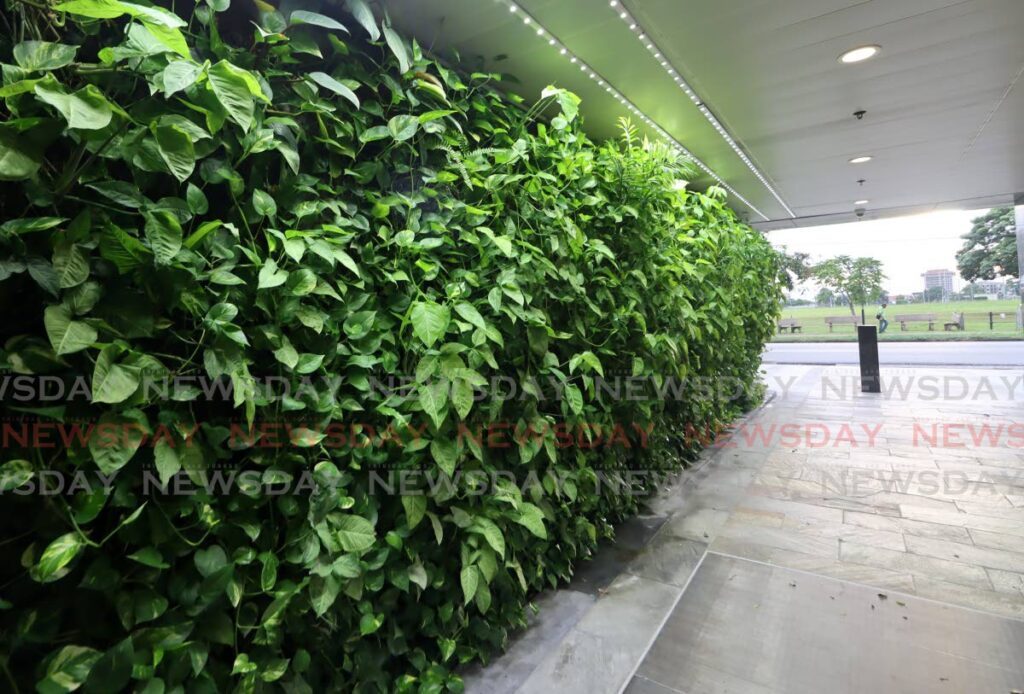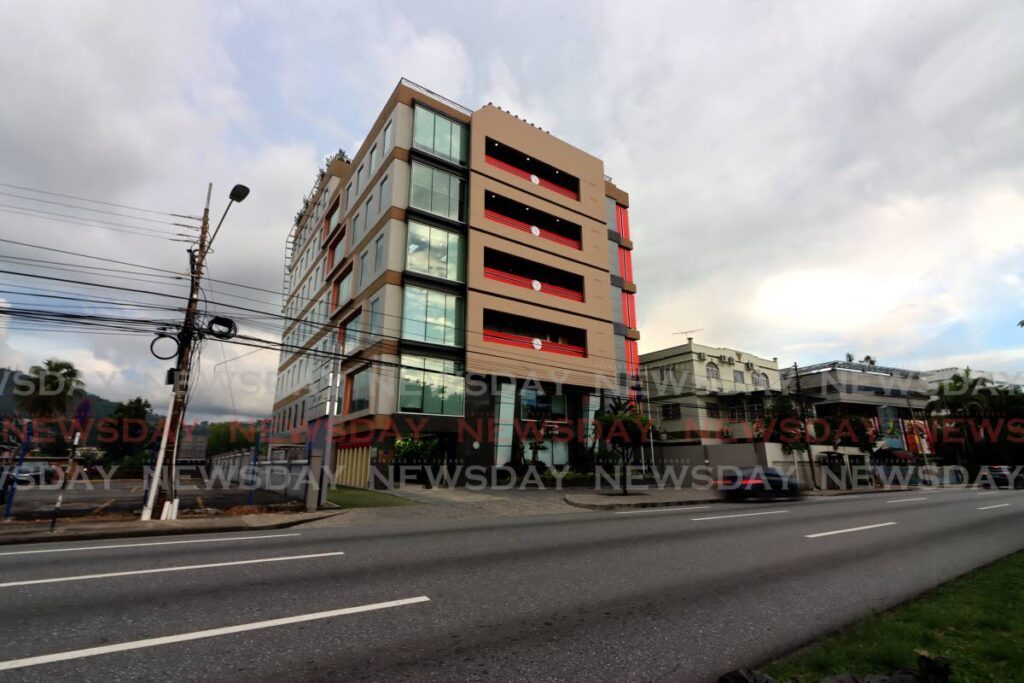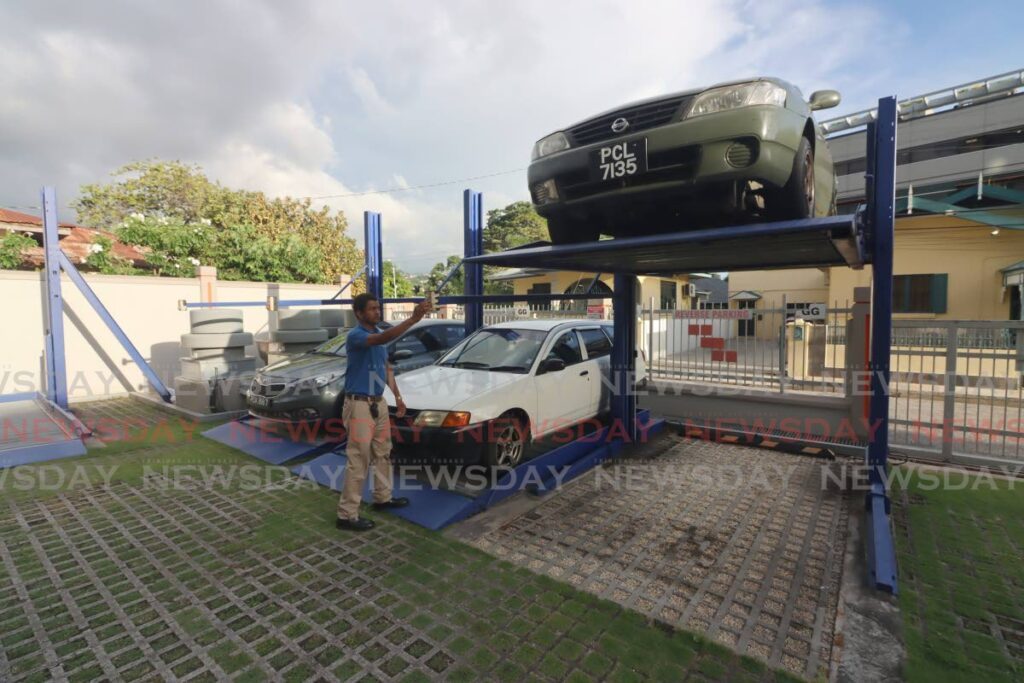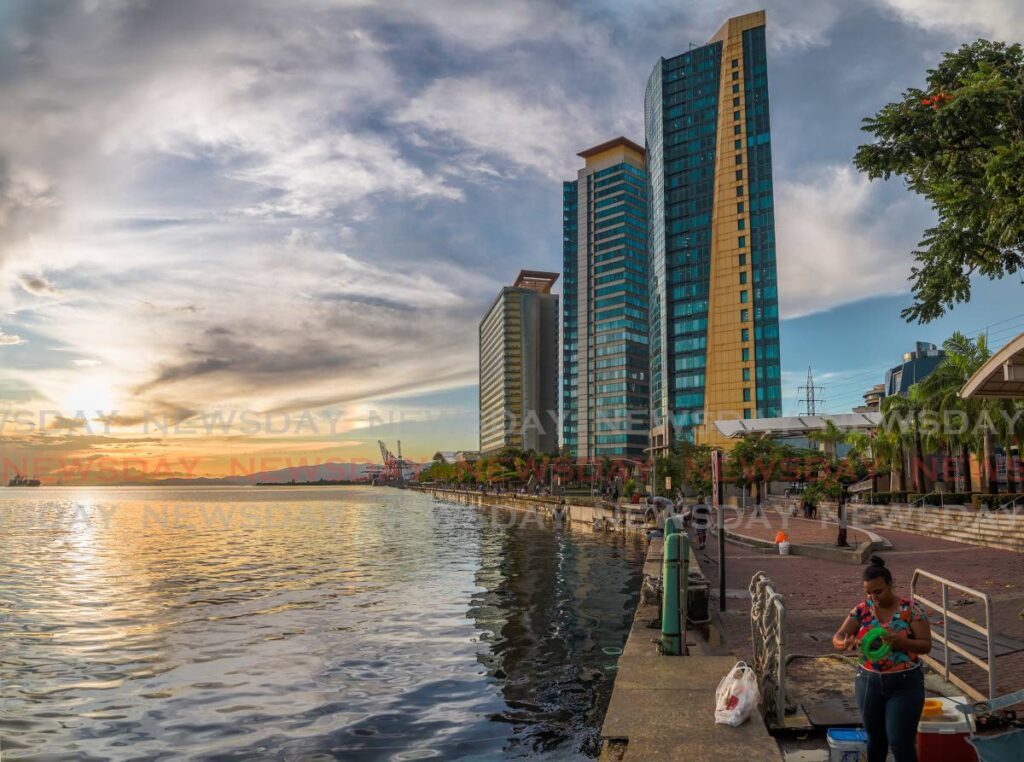Smart building designs, trees can help reduce heat

As the climate crisis continues to raise heat levels globally, experts say there should be a focus on incorporating cooling elements in the built environment.
The continuous high daily temperatures recently experienced in TT brought this home forcefully, as many suffered without air-conditioning in structures designed with no natural ventilation.
While the Met Service has discontinued its projected two-week heat-spell warning which saw temperatures rising as high as 44 degrees C it warned of more high temperatures after the passage of the current tropical wave.
Newsday asked the Town and Country Planning Division (TCPD) whether climate change was considered when granting approval for building plans. The TCPD said it was common knowledge that areas under tree cover and green spaces were generally cooler than highly urbanised places since they offer shade and general respite from the harmful rays of the sun.
“The adverse effects of prolonged heatwaves can be mitigated by conserving vegetative cover even in towns and cities. To reduce the adverse effects of excessive heat experienced and to avoid creating what is commonly referred to as a concrete jungle, current land use policies applied by the TCPD make provision for maintaining vast areas of land in this country under agricultural and forest cover.
“In terms of the built environment, the TCPD applies site development standards such as setback distances, building coverage, site coverage and gives consideration to landscaping and recreational/open spaces when examining development proposals to ensure amenity value, inclusive of adequate ventilation and shade.”
It said landscaping is recommended to facilitate the flow of air, provide shade, and reduce temperatures felt by pedestrians.
“It is prudent to incorporate intelligent use of construction techniques and materials as well as architectural design in building projects to increase ventilation and reduce the effects of the rays of the sun particularly in a tropical climate. It must be recognised that public spaces such as urban parks serve as the city’s green lungs, offering much needed shade and comfort to benefit our general health and wellbeing.”
Urban Development Corporation of TT (Udecott) Ltd architectural department head Marlon Charles said there were several measures taken by the corporation when planning buildings.
“We oriented them on the site to take advantage of the natural light from the north and south façades to reduce dependency on artificial lighting and improve energy efficiency. Where possible we design indoor/outdoor spaces that are shaded and naturally ventilated such as outdoor terraces and corridors. This reduces the need for air-conditioning of the entire building. In terms of environmentally-control internal spaces, we use energy efficient heating, ventilation, and air conditioning (HVAC) systems, light emitting diode (LED) lighting, low flush toilets and automated switches.”
Urban planner Ryan Darmanie said there are several factors in how TT’s cities are built which are making the current heatwave worse. He said the Spanish planned Port of Spain according to the laws of the Indies.

“One such law was that in hot places streets should be narrow, to ensure that the buildings shaded the streets. Many of the early buildings also projected over the sidewalk, further protecting pedestrians from sun and rain.
"In many areas of Port of Spain now, and in other urban areas, local planning regulations require buildings to be set back from the sidewalk and each other a large distance, to be low-rise (eg one to two storeys), and to not lean over the sidewalk, which together reduces the ability of the buildings to shade each other, the street and other surrounding spaces, leaving pedestrians and the buildings themselves even more exposed to the heat.”
He said the UN Habitat publication Energy and Resource Efficient Urban Design Principles for Tropical Countries recognised this shading benefit.
“It says the heights of the buildings along a street should be between two-three times greater than the width of the street right of way, ie the distance between buildings on opposite sides of the street. This protects the street below from the sun’s radiation, while still allowing for cooling breezes.”
He said another factor is the buildings and how they are constructed. “The UN Habitat publication says increasingly popular highly reflective building surfaces like glass and metal-cladding are inappropriate for the tropics, as they can almost double the amount of solar radiation (heat) being directed to street level. In the absence of local building codes addressing this, architects and other building designers today need to understand this and proactively reverse this trend."
Darmanie said urban areas are increasingly being designed to accommodate private vehicles more than public transport vehicles, pedestrians and cyclists. He said given the reflective materials that cars are made of, and the heat they themselves generate, this further reduces the thermal comfort in urban areas.
Architect Aneka Danclair-George said urban planning and design for the past 30 years really had not taken the end user into consideration.
“We’ve seen a lot of first-storey balcony spaces removed, which was a feature in our urban architecture of the past and which provided shade for pedestrians, only to be replaced with glass and concrete façades, which, while aesthetically pleasing, do add to the heat load and carbon footprint of our urban spaces.
“Another issue is also car park spaces. If we look at car park spaces all over the country, they are just massive areas of asphalt exposed to heat with very few, if any, elements of shade by the way of trees.
“I think in terms of a way forward, government executing agencies and private citizens with the affordability to construct in urban spaces should consider incorporating the sustainable architecture and construction methods.”
Need for employers to protect workers
Industrial Court president Deborah Thomas-Felix, speaking on Tuesday at the special sitting of the court for the opening of the 2023-2024 law term, stressed the need for employers to implement safety measures to protect workers from heat-related illnesses and other climate-related dangers.
She said climate change can affect productivity, with workers experiencing intense heat and discomfort when working indoors in buildings which are not properly ventilated, while exposure to extreme heat can result in occupational illness, injuries and even death.
Police Social and Welfare Association head ASP Gideon Dickson said the association has had to procure portable AC units for its members as some newer buildings did not have natural ventilation.

“We have invested hundreds of dollars into portable ACs and they are being rotated from place to place. However, there is need for us even when we build the buildings now to take into consideration that the central air conditioning would not be as functional because of the heat, so therefore you need to have a plan B as it relates to how you construct buildings and how you put people in those spaces.”
TT Contractors Association president Glen Mahabirsingh said the association would be holding seminars for its members with health and safety professionals on working in hot conditions.
“Many of our members started implementing mitigating measures when the heat spell was announced such as shifting working hours from day to night, while others have given out long-sleeved shirts and broad-brimmed hats, energy drinks and electrolyte drinks, and taking a lot more short breaks during the work period as opposed to the conventional one.
“In interfacing with construction workers who are accustomed to working in the heat, they are feeling the difference. So it’s not a myth, it’s really hotter out there.”
Energy-efficient building
In 2017, RGM Commercial Real Estate Development’s Savannah East building became the English-speaking Caribbean’s first Leadership in Energy and Environmental Design (LEED) Silver-certified building.
LEED is an internationally recognised multi-tier and multi-category certification and rating system for the built environment that provides a framework for the sustainable construction and operation of buildings. It is administered by the US Green Building Council (USGBC).
RGM senior facilities services manager Ronald Ayoung said some of the elements involved in getting the certification included the company developing a building design that used certain minimum amounts of sustainable/renewable materials; having low energy and water consumption; having a high level of indoor air quality during and post construction; using waste management and recycling practices during the building phase; using low-flow water fixtures; and encouraging green initiatives among the occupants of the building, among other elements.
Ayoung said three main forces led the company to go for the certification.
“First, we identified an emerging demand by some of our prospective local and foreign corporate tenants for high-quality, sustainable commercial office space that would meet and support some of their environmental, social and governance (ESG) goals.
"Secondly, it was important for us to be mindful of the impact that the built environment has on the planet, and for the Savannah East project, we felt it was important to continue to raise the standard of the facilities we operate and limit the negative impact on the environment.
"Lastly, it was important for us to continue to differentiate ourselves from other traditional commercial buildings in the market and ensure our A-class status.”

Ayoung said there have been direct quantifiable benefits in the cost of the building since the certification was obtained. He said the building consumes less electricity and water per square foot than traditionally designed and built buildings, and the energy efficiency of the building envelope and orientation makes cooling it easier, with less maintenance of equipment required. He said the certification has also encouraged many of the tenants to strive for better sustainable business practices in their day-to-day operations.
He said focusing on more energy-efficient building design could encourage companies to operate and invest in TT.
“Commercial office buildings consume between 30 and 40 per cent of the electricity generated by the utility and generate over 35 per cent of the carbon-dioxide emissions of the country. Apart from lowering the demand and strain on the national energy and water resources, more environmentally responsible design promotes a less wasteful culture and preserves or extends the lifespan of these national energy and water resources. Environmentally-conscious buildings also cost less to maintain, therefore the cost to occupy is less.”
Among the features of the building, at 11 Queen’s Park East, are drainage blocks in the parking lot, hydraulic lifts so that two cars can share one parking space, sensors for the water faucets and toilets so no water is wasted, LED-powered lights on timers, and collection tanks for rainwater and grey water, which are then used to irrigate plants on the roof and sides of the building.
Employers are also encouraged to consider increasing temperatures at workplaces.


Comments
"Smart building designs, trees can help reduce heat"